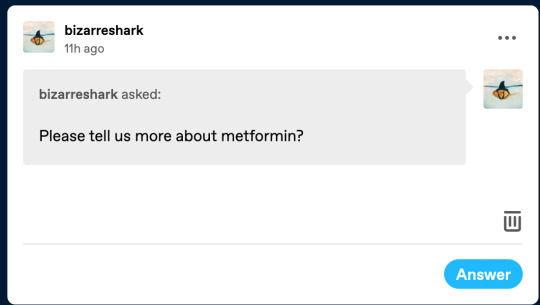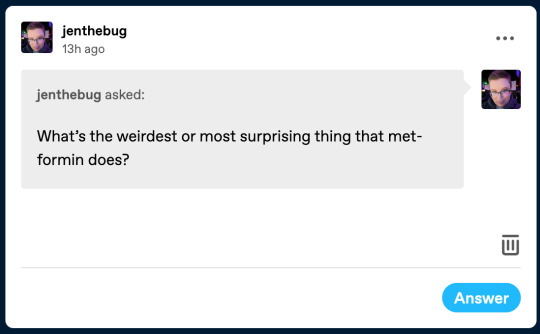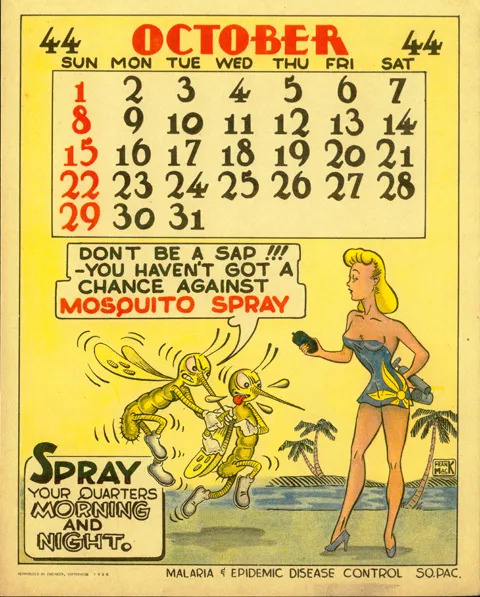#anti-malaria
Text
Thinking about Lena being sick as a dog when they were doing her pre slipstream vaccination batteries
#yknow how when you travel to some countries you have to get like anti malaria vaccines?#yeah that but for hundreds of years of diseases#they probably gave her 2 a round#with something like 15-25 rounds depending on what they were vaccinating for#anything bacteria or viral probably#she was moved to an off base medical center where she could be sick in peace#with daily guards to protect “the asset”#i might write a deep dive on it late but boy am i sure thinking about it#it would have been a nice place like she wasnt under arrwst or anything#( ooc. )#( headcanon. )#ask to tag
7 notes
·
View notes
Text
currently spending my morning scrolling through anti-byler and m*leven. do NOT recommend
#nah bc milkvans think that writing essays will get them anywhere#where’s the actual proof? i can’t find it anywhere#their points are actual trash#no hate to malaria but..🤡#byler#byler endgame#byler is canon#anti mileven#mileven is bones
36 notes
·
View notes
Photo

Harmless Immaturity
Nip it in the bud and break the cycle. That’s the goal of a newly-discovered class of malaria treatments, which aim to interrupt the deadly parasite’s life cycle and prevent its spread. But how exactly the compounds, called sulphonamides, work is unclear. So researchers added a light-activated marker to the drug, and observed as it interacted with infected human blood cells. The marker then highlighted which parasite proteins the treatment interacted with, in particular a protein called Pfs16. With the drug bound to Pfs16, part of the parasite’s maturation process was blocked. The parasites couldn't make mature male sex cells, rendering them unable to reproduce and spread (pictured): green treated parasites (right) unable to 'fly the nest' while untreated, left, break free from the red human cells. Understanding the timing and mechanisms of this process is key to converting this discovery into practical treatments to end transmission for good.
Written by Anthony Lewis
Image adapted from work by Sabrina Yahiya and colleagues
Department of Life Sciences, Imperial College London, Sir Alexander Fleming Building, Exhibition Road, South Kensington, London, UK
Image originally published with a Creative Commons Attribution 4.0 International (CC BY 4.0)
Published in Disease Models & Mechanisms, January 2023
You can also follow BPoD on Instagram, Twitter and Facebook
#science#biomedicine#malaria#parasites#plasmodium#immunofluorescence#anti-malarials#sulphonamide#red blood cells
8 notes
·
View notes
Text
Jamshedpur Intensifies Anti-Dengue Measures Amid Rising Cases
Surprise inspections reveal larvae; hefty fines imposed in affected areas
Jamshedpur authorities launch aggressive campaign to combat dengue, including increased testing and fines for non-compliance.
JAMSHEDPUR – District Magistrate Ananya Mittal has ordered intensified dengue testing and mandated fines for areas where larvae are found in response to rising cases.
Tata Steel Health (Malaria)…
#anti-larval campaign#जनजीवन#community disease awareness#dengue larvae fines#District Magistrate Ananya Mittal#Jamshedpur dengue prevention#JNAC inspections#Kadma Sonari dengue#Life#public health measures#Tata Malaria Department#waterlogging prevention
0 notes
Text
Anti-Malaria Medication Names: What You Need to Know at Waldrug Mart
Navigating the world of anti malaria medication names can be daunting, but Waldrug Mart is here to help. Our online pharmacy stocks Malarone, a highly recommended tablet for its effectiveness and minimal side effects. Doxycycline is another top choice, doubling as an antibiotic for other potential infections. For regions with chloroquine-sensitive malaria, Chloroquine remains a staple. We also provide Lariam, known for its weekly dosing and suitability for long trips. Visit Waldrug Mart to find detailed information and the best anti malaria tablets to keep you safe on your travels.
0 notes
Text
Babul - A Brief Overview:
Babul - A Brief Overview:
Babul, scientifically known as Acacia arabica, is a spiny perennial tree found widely in India and neighboring Asian countries. Known as Gum Arabic due to historical trade, it belongs to the family Leguminosae.
Geographical Presence:
Commonly found in dry regions of India, such as Gujarat, Maharashtra, Uttar Pradesh, and Rajasthan, babul also thrives in Bangladesh, Sri Lanka, Burma, and North…

View On WordPress
#acacia arabica#alzheimer#anti#antioxidant#babul#brief#cancer#diabetes#Dietary#fruit#gum#Health#heart#malaria#mouth#nutritional#powder#properties#ulcer#Uses#Wellness
0 notes
Text


Propaganda
Lauren Bacall (To Have and Have Not, The Big Sleep, Key Largo)—"Just put your lips together...and blow" excuse me ma'am i'm briefly going to turn into a kettle. She's the quintessential Femme Fatale who may betray me in the end but I'd let her it'd be worth it
Laraine Day (Foreign Correspondent, Mr. Lucky)—no propaganda submitted
This is round 1 of the tournament. All other polls in this bracket can be found here. Please reblog with further support of your beloved hot sexy vintage woman.
[additional propaganda submitted under the cut.]
Laraine Day:


Lauren Bacall:

"The VOICE, the SLINK, the EYES. Woof."
"Lauren Bacall was a major lesbian awakening for me. Every picture of her makes it look like she’s about to destroy you physically and emotionally (why is that so hot, I may need help). She had incredible long running chemistry with her husband, Humphrey Bogart, but was an absolute star in her own right. I’ll never be over my crush on her."


"She's got that confident, no-nonsense air about her. She's a boss babe who knows what she wants and gets it DONE. Staunch liberal Democrat her whole life. Campaigned for RFK. From Wikipedia: "In a 2005 interview with Larry King, Bacall described herself as "anti-Republican... A liberal. The L-word". She added that "being a liberal is the best thing on Earth you can be. You are welcoming to everyone when you're a liberal. You do not have a small mind."" Beautiful hair. Beautiful eyes. Beautiful lips. She's just beauty. LISTEN TO HER VOICE. TELL ME THAT'S NOT THE STUFF THAT DREAMS ARE MADE OF."

"A gorgeous lady inside and out. One half of an absolute power couple with Humphrey Bogart, tended to him and other actors suffering from malaria whilst filming the African Queen, generally radiated grace and poise throughout her life. Also her last role was in Family Guy so she needs justice for that"

"HER VOICE. Like yeah, she was absolutely stunning but oh my god, I'm obsessed with her voice"
"She was stunning. Tall and beautiful with a distinctive voice and able to carry her own in a male dominated field. She won the heart of millions, including one of Hollywood's most iconic leading men, Humphrey Bogart. Their story was the stuff of legends, and the chemistry between them was apparent in the multiple films they started in together. She personified the film noir dame and yet she also adapted as Hollywood changed. Her career spanned decades, and she was honored multiple times."
youtube
"She is soooo neat. And hot. And everything. That one scene in To Have and Have Not where she says "you know how to whistle don't you? You just put your lips together and blow" altered my brain chemistry during media archaeology class and here we are."
youtube
395 notes
·
View notes
Text
You hear quite often that humans liking spicy food is weird:
Spicy food evolved to discourage mammals from eating it, because we chew up the seeds so mammals are bad at spreading more plants so our shit isn't worth shit to them - birds, who are famously bad at chewing so can shit out a perfectly intact chilli seed, aren't affected, but to mammals it tricks heat receptors into thinking a Bad Heat is happening.
But then along came humans who go "You know what, put that pain in me, I want to be hurt on the way in and the way out" but this is also the species really reliant on cooking so I guess it makes sense that we'd have less aversion to something in our mouth appearing hot.
But bitterness? That's weird.
So how you taste the primary tastes is a reall loose categorisation done on what simple chemistry your tongue can manage:
Sweet is things your mouth thinks are sugars. Sugars mean quick energy, and body like quick energy so its reaction to them is "yum".
Sour means it's acidic, that's literally just tasting hydrogen ions which are what make acids acids (mostly anyway but you don't want to taste any that are acidic any other way). Sour can mean "This fruit has gone from having sugar in it to having bad in it" so it's a not-great taste.
Umami is protein taste for the most part, and we need that to make more body, so yeah generally positive response.
Salty is salt. That's pretty much all I have for you there. It's your body looking out for sodium ions it needs *some of*. So it's pleasant in a modicum but your mouth has a way of telling you that's too much salt. Some people like their mouth telling them it's too much salt. It's not a perfect system.
And then there's bitterness. Bitterness is really vague, lots tastes bitter, because it's a really scattergun sense to detect poison.
That's literally all bitterness is to detect. Poison. It's your mouth telling you not to eat this.
Humans... Do not care. We name drinks after this taste, voluntarily buy and drink them. We cultivate plants for this taste. Hmm, this gin could do with tasting more like poison. What's your favourite kind of beer? Going-off fruit taste? Oh, mine's tastes-like-poison.
I'm not saying everything that tastes bitter is poison. But I am saying the most bitter thing known to man is strychnine. And the Victorians were so obsessed with the idea that if a sensation is unpleasant it must be good for you led to them trying strychnine as an anti-malarial.
It had some success, as it doesn't take much strychnine to guarantee you don't die of malaria.
420 notes
·
View notes
Text
🧵𝐓𝐡𝐫𝐞𝐚𝐝: 𝐖𝐡𝐨 𝐖𝐞𝐥𝐜𝐨𝐦𝐞𝐝 𝐭𝐡𝐞 𝐉𝐞𝐰𝐬 𝐢𝐧 𝐈𝐬𝐫𝐚𝐞𝐥 𝐀𝐟𝐭𝐞𝐫 𝐭𝐡𝐞 𝐇𝐨𝐥𝐨𝐜𝐚𝐮𝐬𝐭? 𝐒𝐩𝐨𝐢𝐥𝐞𝐫 𝐀𝐥𝐞𝐫𝐭: 𝐈𝐭 𝐖𝐚𝐬𝐧’𝐭 𝐭𝐡𝐞 𝐀𝐫𝐚𝐛𝐬.
Enough is enough, Let’s set the record straight: the claim that Arabs welcomed Jews to Israel after the Holocaust is a false narrative and just a lie. The reality is that it's a much more complex and challenging history. Here’s a comprehensive look at the real dynamics of Jewish immigration and the reception in Israel.

1/ An Ancient Bond: Jews and the Land of Israel.
Let me first say that The idea that Jews arrived in Israel only as Holocaust refugees disregards their ancient and continuous connection to the land. Jews have maintained a consistent presence in Israel for thousands of years, documented in ancient texts and archaeological findings. Cities like Jerusalem, Hebron, and Safed were significant centers of Jewish life long before the 20th century. This deep-rooted connection shows the significance of Israel to the Jewish people throughout history.

2/ The status of Israel in the 1880s
By the 1880s, when the First Aliyah began, Israel was largely neglected and in disrepair. The region suffered from economic stagnation, sparse infrastructure, and minimal habitation. Many areas were desolate, with abandoned villages and a general lack of modern amenities. Public health conditions were dire, with widespread malaria and typhoid fever, and there was a severe shortage of medical facilities and basic health care. The land had been left in a state of neglect by previous rulers and local inhabitants, who had not invested in its development.

3/ The Transformation by Jewish Immigration.
Jewish immigrants arriving in the 1880s faced severe conditions but undertook significant efforts to transform the land. They joined the local Jewish community and they established agricultural settlements, drained swamps, and developed irrigation systems, turning barren land into productive farmland. New towns and cities emerged, such as Tel Aviv, which started as a small neighborhood and grew into a bustling urban center. Their work laid the foundation for the modern state of Israel, significantly enhancing living conditions and infrastructure.

4/ Hostility from Local Arab Populations.
Despite the historical presence of Jews, the arrival of Jewish immigrants in the late 19th and early 20th centuries was met with increasing hostility from local Arabs. Many of these Arabs, who began migrating to Israel around the same time as the First Aliyah, viewed the Jewish newcomers with growing animosity. This hostility manifested in violent confrontations and revolts, such as the 1929 Hebron massacre, where 67 Jews were killed, and the Arab revolt from 1936 to 1939, which targeted Jewish settlements and British authorities. This resistance reflects the significant opposition Jews faced, contrary to claims of a warm welcome.

5/ The Arab Mufti’s Alliance with Nazi Germany.
The situation grew more complex during World War II. Haj Amin al-Husseini, the Grand Mufti of Jerusalem, sought an alliance with Nazi Germany. In 1941, he met with Adolf Hitler, offering support for the Nazi regime and advocating for anti-Jewish policies in Palestine. This collaboration proves again the intense hostility Arab leaders had towards Jews and their aspirations, complicating the notion of Arab support for Jewish migration.

6/ The Efforts of Local Jews to Aid Holocaust Survivors
In stark contrast to the hostility faced, local Jewish communities in Palestine went to extraordinary lengths to assist Holocaust survivors. As the horrors of the Holocaust became known, Jewish organizations in Israel, including the Jewish Agency and various relief committees, worked tirelessly to find refuge for survivors. They orchestrated complicated immigration operations, known as Aliyah Bet, to bypass British restrictions and bring Jews to Israel. The efforts of these local Jewish organizations were instrumental in providing sanctuary and rebuilding lives.

7/ The Birth of modern Israel and the 1948 War.
The Holocaust heightened the urgency for a Jewish homeland. Despite restrictive British immigration policies, many Jews found refuge in Israel. The establishment of the modern State of Israel in 1948 was met with fierce opposition from neighboring Arab countries, who rejected the creation of a Jewish state. This rejection led to the Arab-Israeli War of 1948, driven by the refusal to accept a Jewish state and resulting in significant losses for the Arab forces.

8/ Displacement and Historical Complexity.
The narrative that Jews “took away” Arab land oversimplifies a complex situation. The land of Israel has always been home to a diverse population, including Jews, Muslims, and Christians. The 1948 war and subsequent conflicts led to significant displacement on both sides, including the expulsion of Jews from Arab countries and the creation of Palestinian refugees. This complexity reflects a turbulent history rather than a simple story of land grabbing.

9/ Refuting the “Jews Left” Myth.
The claim that Jews left Israel and returned only after the Holocaust is misleading. The fluctuating Jewish population in Israel over the years does not negate the fact that Jews have consistently maintained a presence there. The migration waves of the 1880s and 1920s demonstrate a profound connection to the land, driven by historical and spiritual significance, not by temporary circumstances.
Saying that Jews left Israel and came back only after the Holocaust is like saying that pasta isn’t Italian because there was a shortage in the 1930s. The essence of our connection to the land has remained unbroken, despite periods of challenge and fluctuation. Just as Italian cuisine remains Italian regardless of temporary shortages, the historical and spiritual bond of Jews to Israel endures despite the changing dynamics over time.

11/ Conclusion: Resilience Through Truth
The ongoing attempts to distort, manipulate, or deny Jewish heritage and historical facts only serve to strengthen our resolve and unity. No one welcomed us to Israel after the Holocaust but the local Jewish community, who worked tirelessly to provide refuge and rebuild lives. Despite the efforts to alter or obscure these historical truths, they remain steadfast and undeniable.
We will not let you change our history. No matter how much people try to change this fact, it won’t work. Throughout history, countless attempts have been made to erase or undermine the Jewish people, and each time, these efforts have failed. Today, with a strong and thriving State of Israel, it is not only misguided but delusional to believe that such attempts can succeed. The more history is challenged or distorted, the closer and stronger we become as a people. Our connection to the land, our historical narrative, and our cultural identity are deeply ingrained and resilient, reinforcing our unbreakable bond to the land and our unwavering strength as a nation.

@AP_from_NY
89 notes
·
View notes
Note
Would love to hear about how you became an anti Zionist!
before i get into this, i'd like to direct you to some of @jewishvitya's posts: [x] [x] [x]. i think their perspective is more relevant to the current situation than mine, and they address issues that i won't get into here because they had no personal relevance to me and you asked about me.
so my family is considered left-wing in israel. my parents voted for ha'avoda (israeli labor) in most elections i can remember, my mom even went "as far" as voting for meretz (as far as jewish parties go, they're the furthest to the left. still zionist though. didnt get enough votes to get into the knesset in the last elections). i grew up mourning rabin, hating bibi before i even knew who he was, believing that the settlements are the source of all israeli wrongdoings. in 2005 people would put ribbons on their cars – green if you support dismantling the settlements in gaza, orange if you're against it. we had a green ribbon. my family talks about the two states solution, about going back to the '67 borders. my grandmother jokingly calls herself a "leftist traitor", because that's how the right labels them.
i grew up with these values. i was taught to value human life, i was taught that all people were equal, i was taught that nationalism and imperialism were wrong. we weren't afraid of talking about the occupation. we weren't afraid of calling israeli fascism what it was. you might have heard about the democracy protests that have been happening in israel in the past year; my parents went every week.
i think this is why it took me so long to break out of my zionist worldview. people talk about zionism as if it's explicitly genocidal and built on racial supremacy, and i understand why (and agree with this to an extent), but you have to understand how absurd this idea sounds to people like my parents. they don't think zionism is the issue, they think the israeli right is. they acknowledge the evils of the settlers in the west bank, but they would never consider themselves settlers. it's very easy to see the wrongness of a person going to someone's house and violently kicking a family out of there because they believe it should belong to them (not a hypothetical, this is happening in the west bank as we speak); it's a lot harder to think that maybe everything you were taught to believe about your own right to be here was a lie from the beginning.
and that's the problem, that it is a lie. we are literally taught there was nothing here. swamps and malaria and sand and sand. the zionists built a civilization out of nothing. that's the story, that's the myth.
another aspect of this that's essential to acknowledge is the dehumanization of palestinians in israel, which is still prevalent in leftist circles, despite taking a different form. the israeli left Loves to make the distinction between palestinians and "israeli arabs" - a term that some people that i have met have used for themselves, and i am not the right person to speak on (i'm sure there's nuance here i'm unaware of). these people don't think of themselves as racists. they don't mind arabs in general, they only mind "the arabs who want to harm us". and it's so easy for them to pat themselves on the back because they have plenty of arab friends and they actively oppose the goverment's racism; but they all draw the line when it comes to palestinians. to them, once a person calls themselves a palestinian, it means they believe jews have no right to exist here. it means their existence is at odds with their own. they don't see palestinians as people, they see them as an agenda.
i was going to add a bit about how the israeli left's aversion to religion (which stems from the influence orthodox jews currently have on israeli law) plays into this, but this is getting really long.
anyway. for me, it wasn't a revelation as much as it was a willingness to open my eyes to the fact that everything i had been taught was a lie. it was always there, this doubt, this uneasiness. i knew that there were a lot of people over the world whose opinions i generally agreed with – except when it came to israel. it just took me a really long time to be able to doubt Everything.
because that required tearing down everything my worldview was based on, everything i had believed in, and it was scary. it's a very, very difficult thing to do. not knowing what to believe is horrifying. realizing you have believed in lies your whole life is horrifying.
but at some point i had to ask myself: how can i hate everything this country stands for, and not doubt what it's taught me? how can i know what i know about the idf, and still believe it's acting humanely? and the thing is, i still don't know what to believe a lot of the time. i still doubt everything, all the time. i'm critical of all of my beliefs, and i think it's good to be. but i listen, and i look, and i feel, and above all i try to be compassionate. and there's only one stance you can take here if you value human life above all else.
here are some israel-based organizations that influenced my political views and i recommend checking out (even though i have my disagreements with them): b'tselem, standing together, breaking the silence, mesarvot
#ask#anon#israel#mmm idk what else to tag this#i had to stop myself at some point but know that obviously there's a lot more to it than what i sad
286 notes
·
View notes
Note
Hey babe, wanna hear something hot? *whispers* history of metformin





Ok okay I'll talk
So metformin is commonly thought of as the most boring of diabetes drugs. Like, everyone who has ever thought about maybe having type 2 diabetes is taking it unless it gives them diarrhea, and even then their doctor still probably wants them to take it. But it's a first line because it's old, it's cheap, it doesn't often cause hypoglycemia, and it has relatively few side effects compared to other diabetes drugs. Also, like a lot of older drugs, it does way more than it says on the packaging. And a lot of stuff we're still learning about.
In order to talk about metformin, we have to talk about a plant called goat's rue. Goat's rue is a plant native to Europe, Africa, and Asia, and currently grows just about everywhere. In ancient times it was used as an anti-parasitic, a plague remedy, and to relieve the excessive urination caused by what might have been diabetes. In 1918 it was found to contain a chemical called galegine, which did lower blood sugar. Galegine as an anti-diabetes medication is probably too toxic to use long term. However, with a few chemical tweaks, it could become a drug that lowered blood sugar without the toxic effects. Metformin was born.
Metformin came out in 1923 and is a type of drug called a biguanide. it's actually the only type in it's class still available as an anti-diabetic agent, because the other drugs in it's class that came out in the 1920s and 30s caused lactic acidosis and liver problems (similar to the types of reactions seen with galegine), and were taken off the market.
Metformin (and pretty much all oral antidiabetic agents in development at this time) didn't do well initially, probably because they came out the same decade as insulin, and insulin was a lot more effective at treating any kind of diabetes.
It fell out of use extremely quickly, and didn't get picked up again until the 1940s, when US access to antimalarial drugs was cut off, just as a war in the pacific was ramping up. Metformin was evaluated as an antimalarial during WWII, and while noted to have some anti-malarial properties (particularly as a malaria preventative) it also was noted to significantly lower blood sugar in diabetic patients- while not lowering blood sugar very much at all in non-diabetic patients.
This effect, rather than it's antimalarial properties, was what got scientists really interested. Unfortunately, it would not be until 1957 in France that metformin had its first major studies to determine that it did, indeed, work against diabetes. Metformin lost the race to the "first" (successful) oral antidiabetic agent by a year, to a different drug that was found while looking for a new antibiotic- Diabenese.
Metformin became a commercial success in France, while Diabenese became successful in the United States. Metformin would actually not be approved for use in the US until 1995.
But now we get to talk about what metformin does and why it's so freaking cool.
Type 2 Diabetes- lowers A1C (a measure of blood sugar control) by 1-2 full points
Prevents/reverses weight gain due to antipsychotics
Prevents and treats malaria
Makes the flu shot work better
Decreases severity of respiratory illness and complications related to the flu
Changes gut microbiome for the better
Regulates periods and reduces other symptoms in people with PCOS
Lowers risk of breast, colon, and prostate cancer
Lowers risk of dementia
Lowers risk of stroke
May increase lifespan
122 notes
·
View notes
Note
hi! SUPER interesting excerpt on ants and empire; adding it to my reading list. have you ever read "mosquito empires," by john mcneill?
Yea, I've read it. (Mosquito Empires: Ecology and War in the Greater Caribbean, 1620-1914, basically about influence of environment and specifically insect-borne disease on colonial/imperial projects. Kinda brings to mind Centering Animals in Latin American History [Few and Tortorici, 2013] and the exploration of the centrality of ecology/plants to colonialism in Plants and Empire: Colonial Bioprospecting in the Atlantic World [Schiebinger, 2007].)
If you're interested: So, in the article we're discussing, Rohan Deb Roy shows how Victorian/Edwardian British scientists, naturalists, academics, administrators, etc., used language/rhetoric to reinforce colonialism while characterizing insects, especially termites in India and elsewhere in the tropics, as "Goths"; "arch scourge of humanity"; "blight of learning"; "destroying hordes"; and "the foe of civilization". [Rohan Deb Roy. “White ants, empire, and entomo-politics in South Asia.” The Historical Journal. October 2019.] He explores how academic and pop-sci literature in the US and Britain participated in racist dehumanization of non-European people by characterizing them as "uncivilized", as insects/animals. (This sort of stuff is summarized by Neel Ahuja, describing interplay of race, gender, class, imperialism, disease/health, anthropomorphism. See Ahuja's “Postcolonial Critique in a Multispecies World.”)
In a different 2018 article on "decolonizing science," Deb Roy also moves closer to the issue of mosquitoes, disease, hygiene, etc. explored in Mosquito Empires. Deb Roy writes: 'Sir Ronald Ross had just returned from an expedition to Sierra Leone. The British doctor had been leading efforts to tackle the malaria that so often killed English colonists in the country, and in December 1899 he gave a lecture to the Liverpool Chamber of Commerce [...]. [H]e argued that "in the coming century, the success of imperialism will depend largely upon success with the microscope."''
Deb Roy also writes elsewhere about "nonhuman empire" and how Empire/colonialism brutalizes, conscripts, employs, narrates other-than-human creatures. See his book Malarial Subjects: Empire, Medicine and Nonhumans in British India, 1820-1909 (published 2017).
---
Like Rohan Deb Roy, Jonathan Saha is another scholar with a similar focus (relationship of other-than-human creatures with British Empire's projects in Asia). Among his articles: "Accumulations and Cascades: Burmese Elephants and the Ecological Impact of British Imperialism." Transactions of the Royal Historical Society. 2022. /// “Colonizing elephants: animal agency, undead capital and imperial science in British Burma.” BJHS Themes. British Society for the History of Science. 2017. /// "Among the Beasts of Burma: Animals and the Politics of Colonial Sensibilities, c. 1840-1940." Journal of Social History. 2015. /// And his book Colonizing Animals: Interspecies Empire in Myanmar (published 2021).
---
Related spirit/focus. If you liked the termite/India excerpt, you might enjoy checking out this similar exploration of political/imperial imagery of bugs a bit later in the twentieth century: Fahim Amir. “Cloudy Swords” e-flux Journal Issue #115. February 2021.
Amir explores not only insect imagery, specifically caricatures of termites in discourse about civilization (like the Deb Roy article about termites in India), but Amir also explores the mosquito/disease aspect invoked by your message (Mosquito Empires) by discussing racially segregated city planning and anti-mosquito architecture in British West Africa and Belgian Congo, as well as anti-mosquito campaigns of fascist Italy and the ascendant US empire. German cities began experiencing a non-native termite infestation problem shortly after German forces participated in violent suppression of resistance in colonial Africa. Meanwhile, during anti-mosquito campaigns in the Panama Canal zone, US authorities imposed forced medical testing of women suspected of carrying disease. Article features interesting statements like: 'The history of the struggle against the [...] mosquito reads like the history of capitalism in the twentieth century: after imperial, colonial, and nationalistic periods of combatting mosquitoes, we are now in the NGO phase, characterized by shrinking [...] health care budgets, privatization [...].' I've shared/posted excerpts before, which I introduce with my added summary of some of the insect-related imagery: “Thousands of tiny Bakunins”. Insects "colonize the colonizers". The German Empire fights bugs. Fascist ants, communist termites, and the “collectivism of shit-eating”. Insects speak, scream, and “go on rampage”.
---
In that Deb Roy article, there is a section where we see that some Victorian writers pontificated on how "ants have colonies and they're quite hard workers, just like us!" or "bugs have their own imperium/domain, like us!" So that bugs can be both reviled and also admired. On a similar note, in the popular imagination, about anthropomorphism of Victorian bugs, and the "celebrated" "industriousness" and "cleverness" of spiders, there is: Claire Charlotte McKechnie. “Spiders, Horror, and Animal Others in Late Victorian Empire Fiction.” Journal of Victorian Culture. December 2012. She also addresses how Victorian literature uses natural science and science fiction to process anxiety about imperialism. This British/Victorian excitement at encountering "exotic" creatures of Empire, and popular discourse which engaged in anthropormorphism, is explored by Eileen Crist's Images of Animals: Anthropomorphism and Animal Mind and O'Connor's The Earth on Show: Fossils and the Poetics of Popular Science, 1802-1856.
Related anthologies include a look at other-than-humans in literature and popular discourse: Gothic Animals: Uncanny Otherness and the Animal With-Out (Heholt and Edmunson, 2020). There are a few studies/scholars which look specifically at "monstrous plants" in the Victorian imagination. Anxiety about gender and imperialism produced caricatures of woman as exotic anthropomorphic plants, as in: “Murderous plants: Victorian Gothic, Darwin and modern insights into vegetable carnivory" (Chase et al., Botanical Journal of the Linnean Society, 2009). Special mention for the work of Anna Boswell, which explores the British anxiety about imperialism reflected in their relationships with and perceptions of "strange" creatures and "alien" ecosystems, especially in Aotearoa. (Check out her “Anamorphic Ecology, or the Return of the Possum.” Transformations. 2018.)
And then bridging the Victorian anthropomorphism of bugs with twentieth-century hygiene campaigns, exploring "domestic sanitation" there is: David Hollingshead. “Women, insects, modernity: American domestic ecologies in the late nineteenth century.” Feminist Modernist Studies. August 2020. (About the cultural/social pressure to protect "the home" from bugs, disease, and "invasion".)
---
In fields like geography, history of science, etc., much has been said/written about how botany was the key imperial science/field, and there is the classic quintessential tale of the British pursuit of cinchona from Latin America, to treat mosquito-borne disease among its colonial administrators in Africa, India, and Southeast Asia. In other words: Colonialism, insects, plants in the West Indies shaped and influenced Empire and ecosystems in the East Indies, and vice versa. One overview of this issue from Early Modern era through the Edwardian era, focused on Britain and cinchona: Zaheer Baber. "The Plants of Empire: Botanic Gardens, Colonial Power and Botanical Knowledge." May 2016. Elizabeth DeLoughrey and other scholars of the Caribbean, "the postcolonial," revolutionary Black Atlantic, etc. have written about how plantation slavery in the Caribbean provided a sort of bounded laboratory space. (See Britt Rusert's "Plantation Ecologies: The Experiential Plantation [...].") The argument is that plantations were already of course a sort of botanical laboratory for naturalizing and cultivating valuable commodity plants, but they were also laboratories to observe disease spread and to practice containment/surveillance of slaves and laborers. See also Chakrabarti's Bacteriology in British India: laboratory medicine and the tropics (2012). Sharae Deckard looks at natural history in imperial/colonial imagination and discourse (especially involving the Caribbean, plantations, the sea, and the tropics) looking at "the ecogothic/eco-Gothic", Edenic "nature", monstrous creatures, exoticism, etc. Kinda like Grove's discussion of "tropical Edens" in the colonial imagination of Green Imperialism.
Dante Furioso's article "Sanitary Imperialism" (from e-flux's Sick Architecture series) provides a summary of US entomology and anti-mosquito campaigns in the Caribbean, and how "US imperial concepts about the tropics" and racist pathologization helped influence anti-mosquito campaigns that imposed racial segregation in the midst of hard labor, gendered violence, and surveillance in the Panama Canal zone. A similar look at manipulation of mosquito-borne disease in building empire: Gregg Mitman. “Forgotten Paths of Empire: Ecology, Disease, and Commerce in the Making of Liberia’s Plantation Economy.” Environmental History. 2017. (Basically, some prominent medical schools/departments evolved directly out of US military occupation and industrial plantations of fruit/rubber/sugar corporations; faculty were employed sometimes simultaneously by fruit companies, the military, and academic institutions.) This issue is also addressed by Pratik Chakrabarti in Medicine and Empire, 1600-1960 (2014).
---
Meanwhile, there are some other studies that use non-human creatures (like a mosquito) to frame imperialism. Some other stuff that comes to mind about multispecies relationships to empire:
Lawrence H. Kessler. “Entomology and Empire: Settler Colonial Science and the Campaign for Hawaiian Annexation.” Arcadia (Spring 2017)
No Wood, No Kingdom: Political Ecology in the English Atlantic (Keith Pluymers)
Archie Davies. "The racial division of nature: Making land in Recife". Transactions of the Institute of British Geographers Volume 46, Issue 2, pp. 270-283. November 2020.
Yellow Fever, Race, and Ecology in Nineteenth-Century New Orleans (Urmi Engineer Willoughby, 2017)
Pasteur’s Empire: Bacteriology and Politics in France, Its Colonies, and the World (Aro Velmet, 2022)
Tom Brooking and Eric Pawson. “Silences of Grass: Retrieving the Role of Pasture Plants in the Development of New Zealand and the British Empire.” The Journal of Imperial and Commonwealth History. August 2007.
Under Osman's Tree: The Ottoman Empire, Egypt, and Environmental History (Alan Mikhail)
The Herds Shot Round the World: Native Breeds and the British Empire, 1800-1900 (Rebecca J.H. Woods, 2017)
Imperial Bodies in London: Empire, Mobility, and the Making of British Medicine, 1880-1914 (Kristen Hussey, 2021)
Red Coats and Wild Birds: How Military Ornithologists and Migrant Birds Shaped Empire (Kirsten Greer, 2020)
Animality and Colonial Subjecthood in Africa: The Human and Nonhuman Creatures of Nigeria (Saheed Aderinto, 2022)
Imperial Creatures: Humans and Other Animals in Colonial Singapore, 1819-1942 (Timothy P. Barnard, 2019)
Biotic Borders: Transpacific Plant and Insect Migration and the Rise of Anti-Asian Racism in America, 1890-1950 (Jeannie N. Shinozuka)
#ecology#bugs#multispecies#landscape#indigenous#haunted#temporal#colonial#imperial#british entomology in india#mosquitoes#carceral#tidalectics#intimacies of four continents#carceral geography#pathologization
87 notes
·
View notes
Text
I really enjoy these pages from an anti-malaria calendar issued to soldiers in World War II. It's a reminder that the soldiers were mostly just kids, and that the way to get them to pay attention was to make silly cartoons with pretty ladies in them.


{Buy me a coffee} {WHF} {Medium} {Looking Through the Past}
More propaganda at the link below:
99 notes
·
View notes
Note
This is confusing me?? Seems very anti worker and also like those weird capitalistic effective altruists but I am trying to give it a chance to make sense https://www.tumblr.com/transgenderer/746203365536661504/hmm-i-think-in-the-us-people-think-of-not-tipping
i mean. i am an effective altruist. charities in very poor parts of the world can be incredibly effective, per dollar. my personal favorite is the against malaria foundation. like, from their website (note: i think there might be overestimates here given the current state, which last analysis i saw was about 3500 a life. but its not order-of-magnitude overstimate)
Each net costs about $2.00, lasts for 3 to 4 years, and protects on average two people.
The statistics are well known given the scale of the problem. Every ~600 nets we put over heads and beds, one child doesn't die and 500 to 1,000 cases of malaria are prevented.
for 10 dollars (5 nets), your donation is likely to *stop someone (possibly multiple people) from getting malaria* thats just...obviously better than giving those 10 dollars to a waiter
i mean. i tip. i want people to like me! so i tip (in the US), but i feel weird about it. because its essentially charity, and its charity to some random dude
55 notes
·
View notes
Text
A Sumatran orangutan in Indonesia has self-medicated using a paste made from plants to heal a large wound on his cheek, say scientists.
It is the first time a creature in the wild has been recorded treating an injury with a medicinal plant.
After researchers saw Rakus applying the plant poultice to his face, the wound closed up and healed in a month.
Scientists say the behaviour could come from a common ancestor shared by humans and great apes.
“They are our closest relatives and this again points towards the similarities we share with them. We are more similar than we are different,” said biologist Dr Isabella Laumer at the Max Planck institute in Germany and lead author of the research.
A research team in the Gunung Leuser National Park, Indonesia spotted Rakus with a large wound on his cheek in June 2022.
They believe he was injured fighting with rival male orangutans because he made loud cries called “long calls” in the days before they saw the wound.
The team then saw Rakus chewing the stem and leaves of plant called Akar Kuning – an anti-inflammatory and anti-bacterial plant that is also used locally to treat malaria and diabetes.
He repeatedly applied the liquid onto his cheek for seven minutes. Rakus then smeared the chewed leaves onto his wound until it was fully covered. He continued to feed on the plant for over 30 minutes.
The paste and leaves then appear to have done their magic – the researchers saw no sign of infection and the wound closed within five days.
After a month, Rakus was fully healed. {read}
32 notes
·
View notes